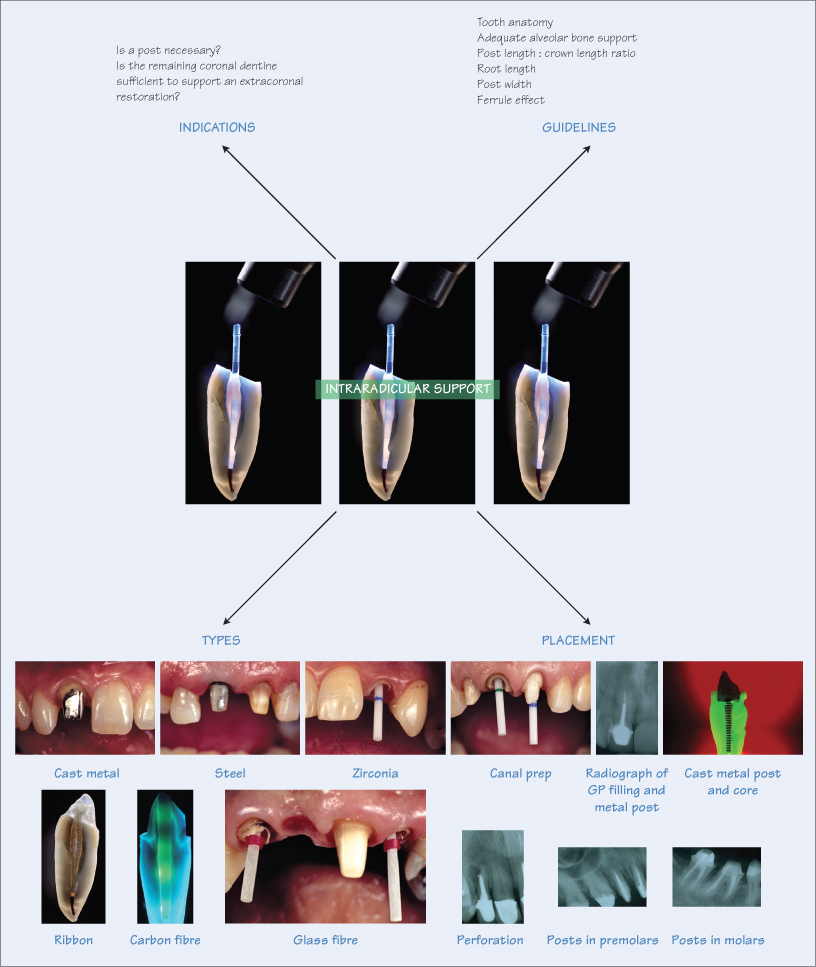21
Intraradicular Support

Posts, or intraradicular supports, do not strengthen or reinforce teeth. In fact the opposite is true: removal of dentine from a root canal to accommodate a post weakens the structural integrity of the root. Heavily broken teeth due to trauma or caries, with or without a root filling, may present with insufficient tooth structure to retain an extracoronal definitive restoration. Therefore, the purpose of a post and core is to gain intraradicular support for the definitive restoration.
Indication for Posts
If there is sufficient remaining coronal dentine to support a restoration, a post is superfluous. This is especially true for molars with considerable amounts of dentine or large pulp chambers. At the other extreme, the incisors have smaller amounts of coronal dentine, which is reduced following trauma, caries or endodontic abscess cavities. In these circumstances, a post is essential for retention of a permanent restoration. Furthermore, root-filled teeth have reduced proprioceptive response, and are therefore more vulnerable to masticatory and occlusal forces.
Guidelines for Post Placement
Before placing a post, certain criteria must be fulfilled in order to ensure its survival and that of the overlying extracoronal restoration. Some factors to consider are:
- Tooth anatomy:
Molars – choose the largest and straightest canal for post placement, i.e. distal canals of mandibular molars and palatal canals of maxillary molars. Placing posts in curved root canals often results in perforations into the periodontal ligament or alveolar bone;Premolars – smaller pulp chambers, with tapering roots exhibiting thin mesiodistal cross-section with proximal invaginations;Incisors and canines – post is unnecessary if sufficient coronal dentine is present. Mandibular incisors have thin, tapering and narrow mesiodistal root morphology;
- Sufficient alveolar bone support encompassing at least half of post len/>
Stay updated, free dental videos. Join our Telegram channel

VIDEdental - Online dental courses


